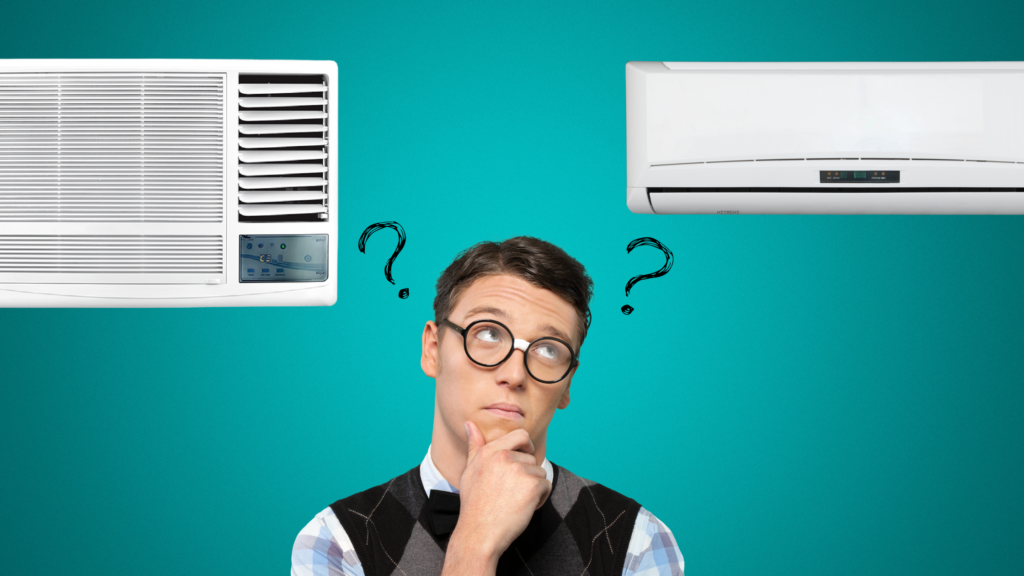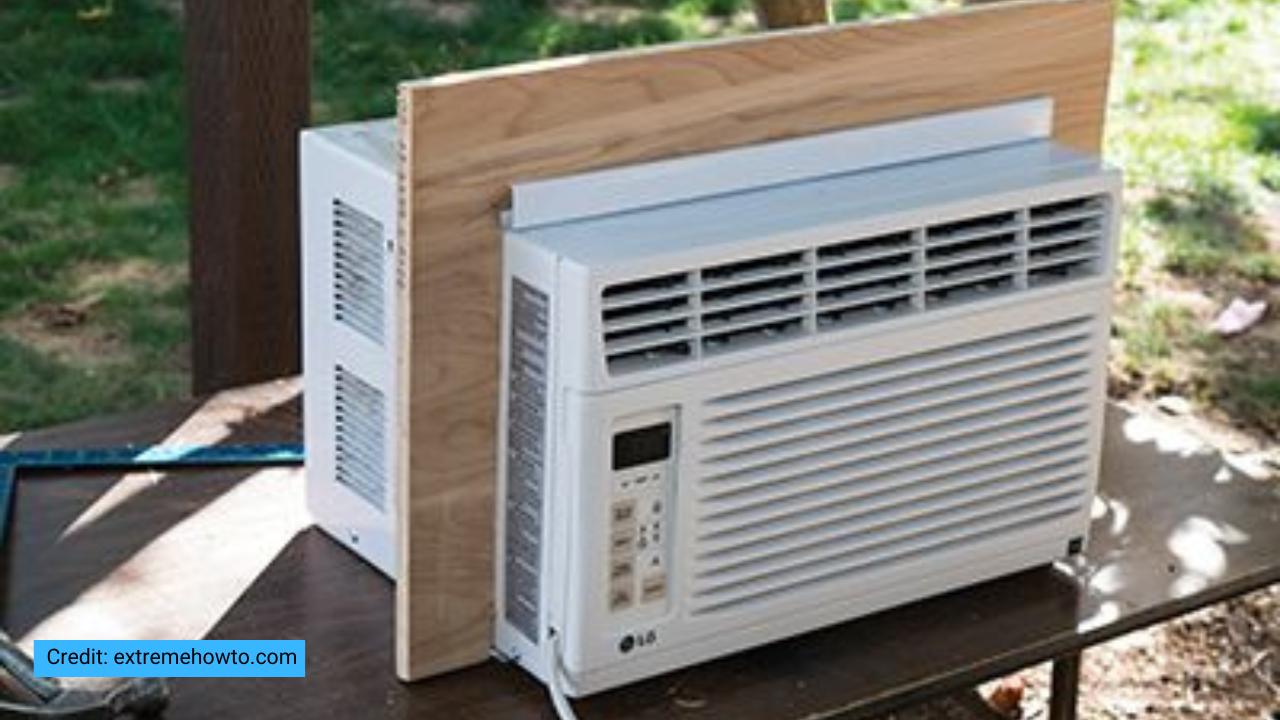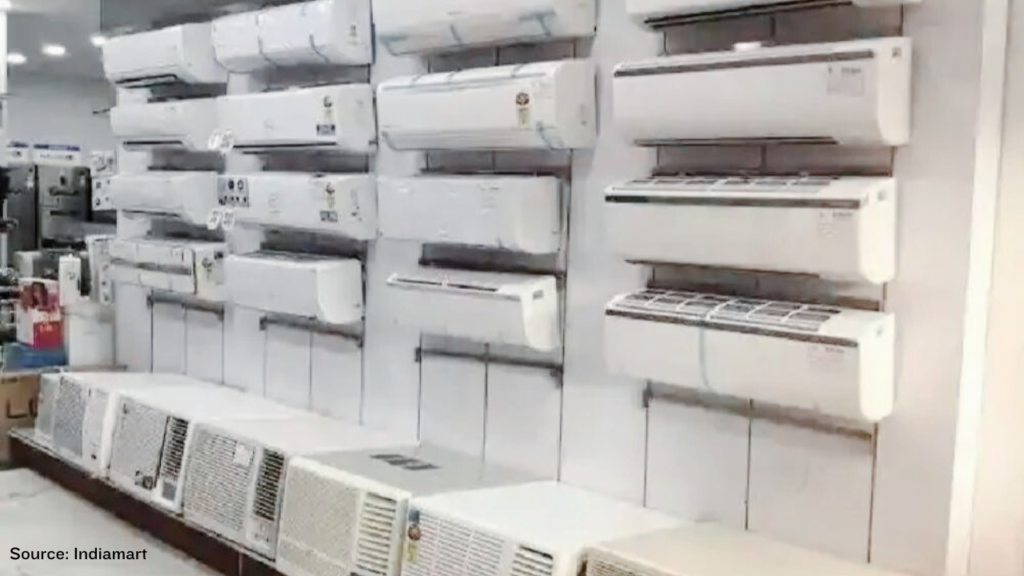
Introduction
When the scorching summer heat arrives, the ‘Split AC Vs Window AC’ debate is inevitable. Air conditioners are more than just appliances; they’re experiences, you share with your family. Everyone wants to have a say in the buying decision. So, Let’s explore the difference between these two popular domestic cooling options to help you make an informed choice that suits your family and your budget.
Table of Contents
Split AC vs Window AC: Choosing the Right AC
When it comes to cooling your independent house or condo without a central cooling system, you have two primary options: Window AC and Split AC. While both offer similar functionality, their designs diverge significantly.
Window AC:
These self-contained air conditioner units are installed directly in the window or through a wall opening in your room. The air vents, air filters, sensors and control buttons, all faces the interior of the room. On the other side you will find bulkier components including the compressor and drainage system, which hang outside the window frame. All these are enclosed inside a metal sheet, making it a single unit.
Split AC
As the name suggests, the appliance is split into two units. One is called indoor unit and other one is called outdoor unit. Both the units are connected via refrigerant tubing, condensate drain and a power cable. Indoor unit does not need a window. It can be mounted on a wall. Outdoor unit houses the compressor, which is essentially the heart of your air conditioner. It is bulkier and heavier than indoor unit. It requires adequate installation space.
Installation : Aesthetics vs Practicality
For many, installation challenges, process and cost, can play major role in deciding between Split AC and Window AC. Let’s delve into the installation challenges associated with both the air conditioners, consider their pros and cons
Window AC Installation
Pros:
- Space Efficiency: Window ACs require only a single window or wall opening for installation. They fit snugly within the designated space.
- Ease of Installation: Installing and uninstalling window ACs is relatively straightforward.
- Effective for Small Rooms: Window ACs work efficiently in compact rooms and smaller spaces.

Cons:
- Light and Air Blockage: When installed, window ACs can obstruct natural light and fresh air from entering the room.
- Height Consideration: If your window is positioned higher than five to six feet, it becomes challenging for service engineers to handle the AC unit during installation and maintenance.
Split AC Installation
Pros:
- Aesthetic Flexibility: Split ACs offer greater design flexibility, blending seamlessly with your room’s decor.
- Ideal Height: For optimal performance, split ACs should be installed at a height of seven to eight feet above the ground.
- Cooling Efficiency: Split ACs can cool larger rooms or spaces more effectively than window ACs. They are well-suited for halls or small offices.

Cons:
- Space Requirements: Split ACs consist of two separate units (indoor and outdoor). You need double the installation space to accommodate both.
- Technical Expertise: Installing split ACs requires specific technical skills due to the separate indoor and outdoor components.
- Different Servicing Needs: Maintenance for split ACs differs from window ACs. Both the indoor and outdoor units require regular servicing.
- Nightmare Scenario: If the outdoor unit lacks ample space for service engineers during installation, it can lead to challenging maintenance situations.
Window AC vs. Split AC : Energy Efficiency
Power consumption, or in other words energy efficiency of your air conditioner depends on several factors. Let’s explore them one-by-one to understand how they impact your AC’s performance.
- Energy Efficiency Rating (EER): The EER indicates how efficiently an AC converts electrical energy into cooling. In India, it is now called ISEER (Indian Seasonal Energy Efficiency Ratio). Higher ISEER values mean better energy efficiency.
- Cooling Capacity: ACs with higher cooling capacities consume more power. Choosing the right capacity for your room size is crucial.
- Compressor Type (Inverter / Non-Inverter): Inverter compressors adjust their speed based on cooling demand, resulting in energy savings. But they are costlier than non-inverter. If your daily usage of air conditioner is more than fifteen hours, then only you should consider paying premium for inverter AC.
- Outdoor Temperature: Extremely hot weather can significantly increase the power consumption of your AC. It will have to run longer and consume more energy to maintain the indoor comfort. In other words, higher the outdoor temperature, lower is the energy efficiency of your air conditioner.
- Sun Exposure: If the walls of your room are exposed to direct sunlight for longer hours, it will increase cooling load and impact power usage of your air conditioner.
- Room Insulation and Sealing: Proper insulation minimizes heat exchange, reducing energy consumption. Make sure your door and windows don’t have major gaps. If your room have big single glass door and windows, try to use thick curtains or blinds to stop the UV rays from enter your room.
- Occupancy: The number of people in the room affects cooling needs. Always consider current and future occupancy requirement before buying and air conditioner.
- Gadgets and Appliances: Other electrical devices like laptops, gaming PC and Led screens in the room, also contribute to overall power usage of your air conditioner.
All the above factors equally effects the performance of both window as well as split air conditioners. Here, split AC may have little advantage over window AC as they are typically installed higher up on walls, allowing for better air distribution and uniform cooling across the room. Also, split ACs often benefit from early adoption of technological advancements. These innovations contribute to improved energy efficiency, making split systems more power-saving. But, these new add-ons make split ACs even more costlier. In long term consideration, Window ACs remains practical choice for smaller rooms.
Split AC vs Window AC : Noise Levels
When it comes to noise, split ACs emerge as the clear winners. They produce minimal to no noise inside your room. The indoor unit of a split AC is installed within the room, away from the outdoor components. While the outdoor unit (housing the compressor and fan) may generate some noise, it does not significantly impact the indoor environment.
In contrast, window ACs face challenges due to their compact design. All components, including the compressor and fan, are crammed into a single unit fixed on the window frame. As these components operate, they produce noise and vibrations. Despite best of your efforts, it will remain difficult to bring the noise comparable level of a split AC. If a quiet indoor environment is your priority, split ACs are the better choice. Consider your comfort and noise tolerance when making your decision.
Split AC vs Window AC : Range and Options
When you step into a nearby showroom, you’ll encounter an extensive display of split ACs, showcasing a wide variety of options in terms of price, cooling capacity, features, and colors. In contrast, you will find a modest display for window ACs. Why? Because air conditioners are now sold as a package which includes extended warranties and annual maintenance charges. Additionally, it is easier to highlight distinctive USPs of split ACs such as quieter operation, uniform cooling, and colour options. This makes the sales pitch stronger and helps in upselling. Manufacturers and sellers can earn better margins from this overall package.

Conclusion : Making the right choice
When deciding between a Split AC and a Window AC, consider your specific needs and circumstances.
In the battle of affordability, the window AC emerges as the clear winner. Regardless of brand, star rating, capacity, or type (inverter/non-inverter), window ACs consistently sport a lower price tag while offering comparable specifications and cooling solution for your small space. Although the initial selling prices may not reveal a stark contrast, here’s the twist: installation and servicing charges for split ACs can nearly double those of window ACs. So, if your budget leans toward cost-effectiveness, the window AC takes the crown!
But, if you are looking for a cooling solution for a bigger space, a quieter room, a clear window for natural light and fresh air, a Split AC should be your obvious choice. Remember, both types have their merits, and the decision ultimately depends on your unique requirements.

About The Author
Hey, I am Dipak Kumar, an entrepreneur, digital marketer and content creator. Over the course of my extensive professional journey, I have contributed to various organizations in diverse roles, including marketing, retail, and merchandising. Throughout this journey, I have had the opportunity to work with consumers at various stages of the buying process, witnessing the ever-evolving behaviors of shoppers – from traditional brick-and-mortar stores to organized retail and the digital landscape of e-commerce.
My true passion lies in the realm of electronic products and gadgets, encompassing mobiles, laptops, cameras, and appliances. These technological marvels both captivate and bring me a sense of comfort. Recently, I’ve embarked on a new adventure by launching a YouTube channel called ‘Tech Easy Peasy.’ Here, I delve into comprehensive product reviews and strive to keep you well-informed about the latest releases and trends in the world of gadgets and electronic products. Please consider following my channel for the most recent insights and in-depth analyses.
